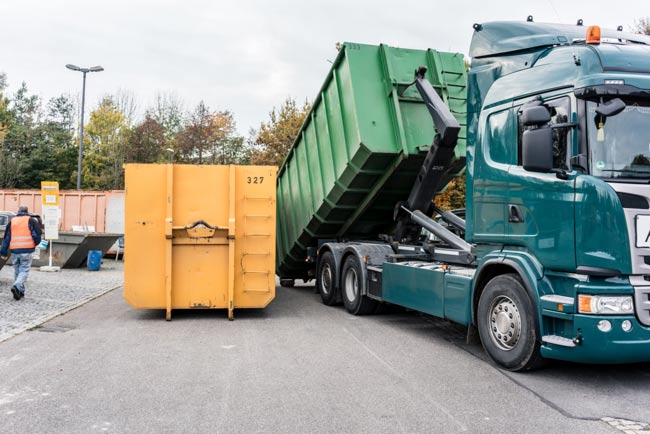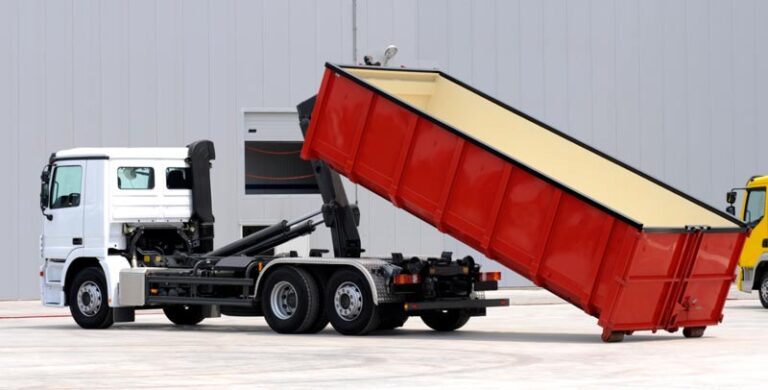Contents
- What is an HGV axle weight?
- Understanding HGV loading weights
- Why are there road weight limits in the UK?
- The importance of HGV sat nav and route planning
- Understanding HGV class weight limits
- DVSA (formerly VOSA) weight limits
- How to calculate your axle weight
- MAM weight
- Frequently Asked Questions
- Useful links
HGV weight restrictions are enforced on UK roads for three key reasons; safety, road wear and tear and competition. Overloaded lorries won’t stop quickly enough in an emergency and steering can be affected. Wear and tear of roads and bridges is accelerated if vehicles are carrying excessive weight and setting weight limits enables fair competition between law-abiding operators. This article looks at current HGV weight regulations set by the Department for Transport.
The DVSA (formerly VOSA) is an executive agency sponsored by the Department for Transport (DfT). It exists to make sure that vehicles are safe to drive on the UKs roads.
All HGVs must be fitted with a weight plate which will state the weight of the vehicle (axle weight) itself and the maximum permitted weight (loading or gross weight) that the vehicle can carry. This has the effect of limiting the roads that a vehicle can use.
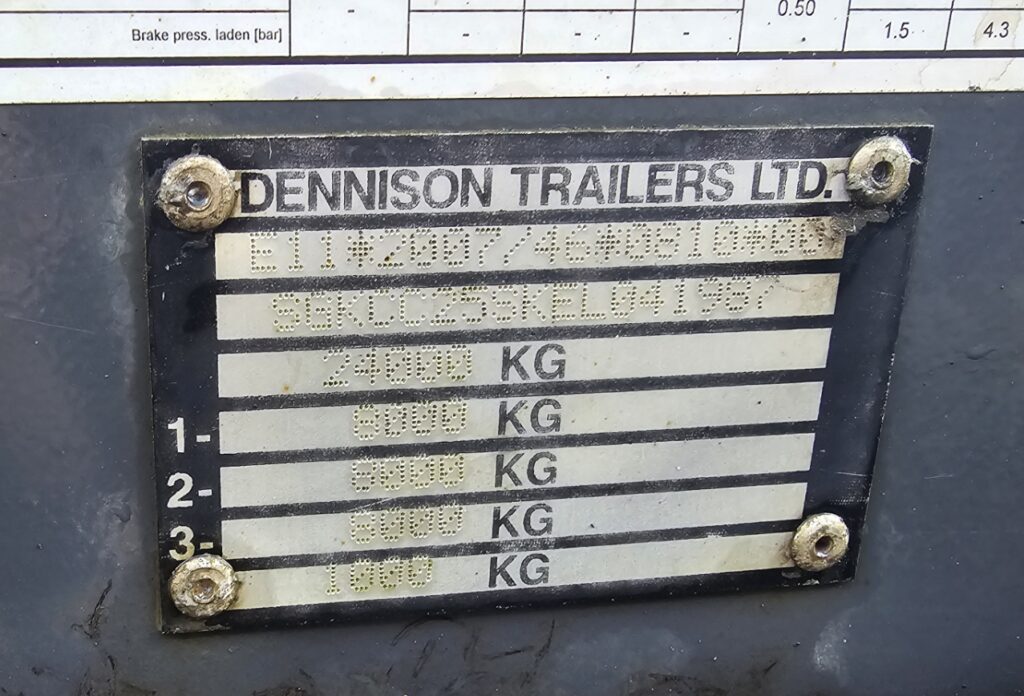
Road safety and vehicle safety is of paramount importance and so it is vital that HGVs only carry loads that are permitted for their vehicle type and only travel on roads that can withstand their use.
Further information on the HGV weight plate can be found in our blog article here.
Read on for more information about HGV weights and limits.
What is an HGV axle weight?
The HGV axle weight is the total weight that a heavy goods vehicle can carry across one axle, therefore restricting the load weight transferred to the road by all the wheels on that axle. A vehicle’s axle weight will be shown on its weight plate.
The total axle weight for any vehicle is determined by two things: the design of the vehicle/number of axles and the need to protect our roads from excessive wear and tear.
Therefore, the greater the number of axles on a HGV, the greater the permitted HGV axle weight, which will establish the maximum load weight that a vehicle can carry.
Both the police and DVSA have the power to stop your vehicle and carry out on-the-spot roadside checks, which can include checking that the weight of your vehicle does not exceed its permitted axle weight.
If a HGV axle weight is exceeded a vehicle will be classed as overloaded, which is an offence that carries penalty points and the potential for prosecution.
The HGV axle kerb weight is the weight of the empty vehicle, i.e. the weight of an HGV before it is loaded up.
Understanding HGV loading weights
The HGV loading weight refers to the maximum load weight that can be carried on an axle. It is also referred to as the gross vehicle weight. The overall HGV loading weight will depend on the number of axles that are on a vehicle and will be shown on the weight plate.
HGV drivers or fleet managers must calculate the gross vehicle weight to make sure that each vehicle that they are responsible for does not run the risk of being overloaded. This is done by calculating the gross axle weights.
Why are there road weight limits in the UK?
UK road weight limits are designed to minimise wear and tear on roads that aren’t built to withstand use by heavy vehicles. They also help to avoid HGVs getting stuck on unsuitable roads and causing congestion on local routes.
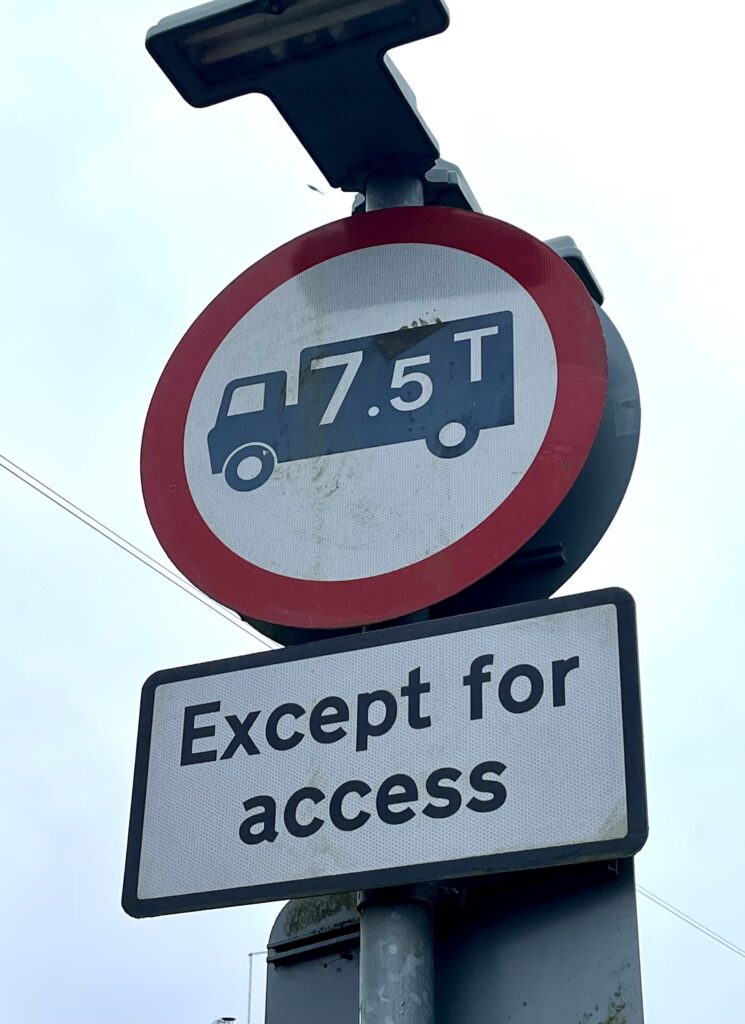
Any vehicle weighing more than 7.5 tonne should not use a road if the 7.5t weight limit sign is displayed by a roadside, except for access. A weight restriction of less than 7.5 tonnes can only be imposed for structural safety reasons.
Weight limit orders are also enforced to prevent HGVs from driving on minor roads in areas that are unsuitable for their size or where they could pose a danger, often attempted as a short cut between main routes.
A penalty fine of £1000 may be imposed if a driver is found guilty of breaking a weight restriction order on UK roads.
The importance of HGV sat nav and route planning
HGV drivers should always plan their routes to ensure that they only use roads that are suitable for their weight. It is recognised that deliveries etc may need to be made on local, smaller roads but HGVs should only be driven on larger routes wherever possible.
All too often, local routes are disrupted by lorries using unsuitable roads and either getting stuck on bends or damaging structures such as bridges and fencing because their sat nav has taken them on the shortest route rather than the most appropriate one.
It is also recommended that where HGV drivers use HGV specific sat nav systems to plan their routes and that these systems are regularly updated.
Many route planning apps don’t have this function and can send HGV drivers on routes that are not suitable for large, heavy vehicles.
Further information on sat nav apps and systems for use in the UK can be found in our blog article here.
Understanding HGV class weight limits
The HGV Class 1 weight limit
The HGV Class 1 weight limit includes C+E vehicles, which are essentially articulated or artic lorries weighing 7.5 tonnes or more with detachable cabs and trailers. HGV Class 1 lorries can carry loads of up to 44 tonnes.
The maximum HGV Class 1 weight limit does vary according to the number of axles a vehicle has. This can be see in the GOV.UK document “A Simplified Guide to Lorry Types and Weights”.
The HGV Class 2 weight limit
The HGV Class 2 weight limit includes rigid lorries with a cab and trailer that can not be detached. So called ‘rigids’ have a weight limit of over 7.5 tonnes and up to 30 tonnes.
Artic lorry weights
Artic or articulated lorries can weigh anything from 7.5 tonnes up to 44 tonnes including their load. These vehicles have a separate cab (or tractor) and trailer.
The maximum artic lorry weight will take a few factors in to account. This includes the weight of the vehicle alone (also known as Gross Vehicle Weight or GVW), the weight of the vehicle and any trailer (Gross Train Weight or GTW) and Road Friendly Suspension (RFS), which comprises of air suspension or an equivalent system.
For an articulated lorry the maximum weight is limited to:
- · 3 axles: 26,000kg
- · 4 axles: 36,000kg
- · 5 axles: 40,000kg
- · 6 axles: 44,000kg
HGVs with a Gross Vehicle Weight of over 44 tonnes will need to apply for a Special Types Goods Order, or STGO. More information on STGO regulations and categories can be found in our blog.
DVSA (formerly VOSA) weight limits
DVSA (formerly VOSA) weight limits apply to all vehicles that use the UK’s roads. Drivers must apply for different driving licences in order to drive certain classes/weight of vehicle. In the case of HGVs the weight of a vehicle must not exceed the figure stated on the weight plate.
The table below summarises maximum gross weights for HGVs in the UK as set out in the Road Vehicles (Construction & Use) Regulations 1986 as amended (C&U), and the Road Vehicles (Authorised Weight) Regulations 1998 as amended (AWR) for articulated lorries.
Articulated vehicle weights
| Number of axles | C&U max weight limits (kg) | AWR max weight limits (kg) | ||
|---|---|---|---|---|
| 3 | 25000 (26000 with road friendly suspension) | 26000 | ||
| 4 | 32520 (35000 with road friendly suspension) | 36000 (38000) * | ||
| 5 | 38000 (44000) ** | 40000 | ||
| 6 | 44000 ** | 44000 *** | ||
| * | 38000kg if the combination consists of a 2 axle tractor unit and 2 axle semi-trailer where the gross weight of the tractor unit does not exceed 18000kg and the gross weight of the semi-trailer does not exceed 20000kg. The drive axle must be fitted with twin tyres and road friendly suspension and the trailer axle spacing February 2010 must be at least 1.8m. | |||
| ** | Operation at over 38000kg under the C&U regulations is restricted to combined transport operations. | |||
| *** | For operation above 40000kg, the drive axle(s) must not exceed 10500kg and have road friendly suspension OR have a maximum axle weight not exceeding 8500kg. Each part of the combination must have 3 axles and the trailer must have road friendly suspension. Additionally, an engine complying with at least Euro 2 specification (or gas) is needed for operation over 41000kg. | |||
The full table, with maximum gross weights for rigid motor vehicles and drawbar combinations (as well as those for articulated lorries) can be found at GOV.UK.
How to calculate your axle weight
We have included a handy axle weight calculation to help you calculate the gross axle weight and rear axle load for your HGV. It is important to understand these figures so that you can ensure that your HGV does not exceed its maximum permitted weight and is safe to drive on roads in the UK.
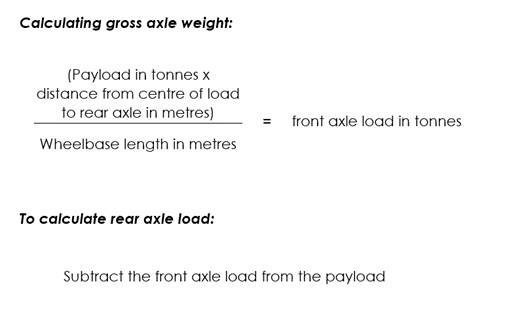
The total weight on the road can be found by adding the weight of the empty vehicle (axle kerb weight).
MAM weight
MAM weight (Maximum Authorised Mass) is also known as GVW or Gross Vehicle Weight. It is the total weight of a vehicle or trailer including the maximum load that can be carried safely when it is being used on the road.
Another commonly used term for this is maximum permissible weight.
The MAM weight will be listed in a vehicle’s owner’s manual and should also be shown on a plate or sticker fitted to the vehicle, which we have referred to earlier as the weight plate.
A weight plate may also show a gross train weight (GTW), also sometimes called gross combination weight (GCW). This is the total weight of the tractor unit plus trailer plus load.
Frequently Asked Questions
How much weight can a 7.5 tonne lorry carry?
A 7.5 tonne lorry can carry loads that weight up to and including 3000kg.
How much weight can an artic lorry carry?
This depends on the vehicle that is carrying the load and is governed by the number of axles the vehicle has. The maximum load that can be carried by a 6 axle articulated lorry is 44000kg. See the table in the section above called DVSA (formerly VOSA) weight limits.
What can result from overloading an axle?
Overloading an axle can result in an unbalanced load. This can cause a vehicle to become unstable and affect the control that a driver has of their vehicle, particularly when steering and braking.
If a load is reduced during a delivery round, the remaining load should be redistributed across the length of the vehicle to ensure that no axles are overloaded.
What would be affected if you carry a very heavy load on your vehicle?
If you were to carry a very heavy load on an HGV not only would you be breaking the law and subject to penalties, fines and even prosecution, you would also risk the following:
- · Decreased control of the vehicle’s steering and increased risk to other road users
- · Longer breaking time/longer stopping distances and increased risk to other road users
- · Reduced lifespan of road surfaces
If a load exceeds 44000kg (or 43.3 tonnes) it will be classed as an abnormal load and will require a special licence to be driven on UK roads.
This is known as a Special Types General Order (STGO). The relevant authorities need to be notified and there are different notice periods depending on the type, width, weight and length of the vehicle. Further information on STGOs can be found in our blog article here.
What is MAM weight?
MAM weight is the total weight of a vehicle (and trailer where applicable) and the load carried on that vehicle/trailer. The MAM weight for each vehicle will be specified on a weight plate, usually located within the lorry cab or on the chassis of large trailers.
Where can the axle weight limits be found?
Axle weight limits can be found on a vehicle’s weight plate. This is usually located within the lorry cab and on the chassis of large trailers. It may also be found in the owners manual.



